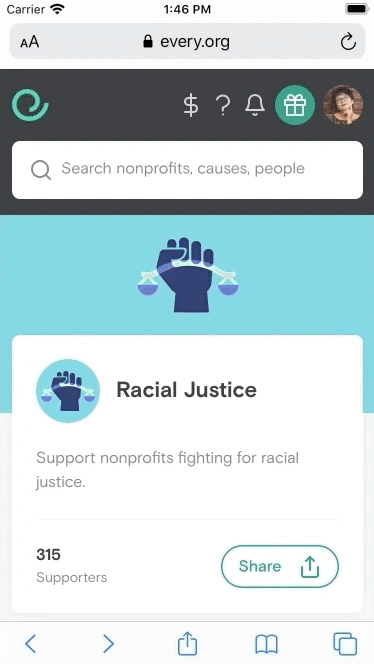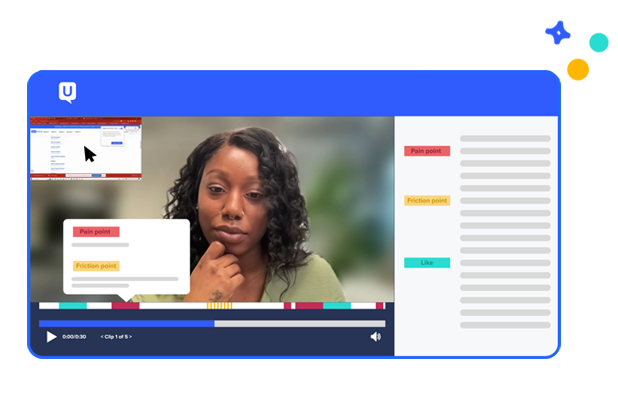
How remote user testing helped Every.org improve the charitable giving experience

At Every.org, we’re building a simple and social giving experience. And since giving is such a personal practice, it’s critical for us to understand the unique needs of all our donors. Which is why it’s important that we conduct user testing to create the best possible product experience.
In the early phases before launching, we conducted extensive in-person interviews about how and why people give. People had the chance to play with paper prototypes and engage in focus groups. However, this year, with a product fully launched and the need to socially distance, we knew that we needed a new method for getting things done.
That’s when we received a UserTesting OneWorld grant for nonprofits to help us better understand how real people use Every.org to give to their favorite charities—as well as where we could improve.
Understanding the ‘why’ with user testing
Making the transition to a remote testing environment was necessary for Every.org, but quickly we realized the benefits of testing this way. At a high-level, we instructed our participants to complete important actions on our website like creating an account, discovering nonprofits, following friends, making donations, and more. After completing our first round of tests, we were most excited about how everyone “thinks out loud” when they’re completing their tasks.
So not only were we provided video footage of people completing tasks—showing exactly how long it takes and when people would fail or get stuck—but we were able to discern exactly why each action was taken. Beyond mouse clicks and other analytics, we were able to listen to participants narrate their experiences to uncover insights we never had before.
Refining the user experience (UX)
These tests helped us refine the user experience on our site—whether our assumptions matched the outcomes of the tests, or not.
For instance, we designed the donation process to be incredibly simple and fast, which delighted our users. But when you are working day-in and day-out on a product, your assumptions can sometimes be very different than how actual users experience it.
To give a concrete example, we built a “like” feature on Every.org as a way to show appreciation for when friends share why they give. In this way, you can like someone’s comment if it moves you, and your friend gets a notification that you liked it.
By leveraging analytics, we could see that this feature was engaging users and (perhaps even more importantly) that people who liked donations were more likely to later make donations of their own. However, it wasn’t until listening to real test participants that we realized a like was also about sharing their support for the nonprofit and making sure they could find that organization again in the future when they want to make a donation.
With this insight, it was clear that we needed to prioritize the ability to like nonprofits directly instead of only other people’s donations. As of this month, everyone can like any nonprofit in our database of over 1 million organizations, feature likes on their profile, and ultimately come back later to make donations.

Here are the major benefits we realized with remote user testing compared to in-person:
- Speed: We could launch a test in minutes and gather results from diverse audiences in a couple of hours or less.
- Safety: Masks are wonderful, but when possible staying home is even better during a pandemic.
- Stability: After setting up an interview, we can let it run the same process again and again instead of having each interviewer bring their own personality to the table. It’s all about listening to the videos we receive.
- Selection: UserTesting has some awesome methods for screening and testing with people from different geographies, income levels, ages, and more. We also added custom screener questions like “How many charities do you give to each year?” that was more specific to the Every.org product.
- Synthesis: After testing completes, it’s easy for the entire team to watch the video recordings at double-speed and take note of particularly interesting moments.
While there’s nothing quite like being able to give someone physical objects so they can build their own charity profile, along with a marker to make edits, even after the COVID-19 pandemic ends, UserTesting will remain an important part of how we improve Every.org to make it the best experience possible for both givers and nonprofits.

Get actionable insights today
Uncover human insights that make an impact. Book a meeting with our Sales team today to learn more.





